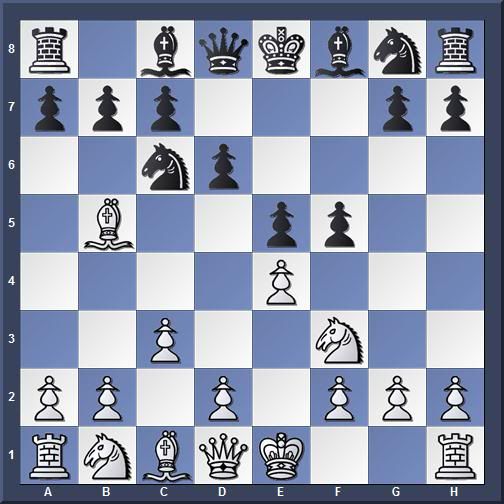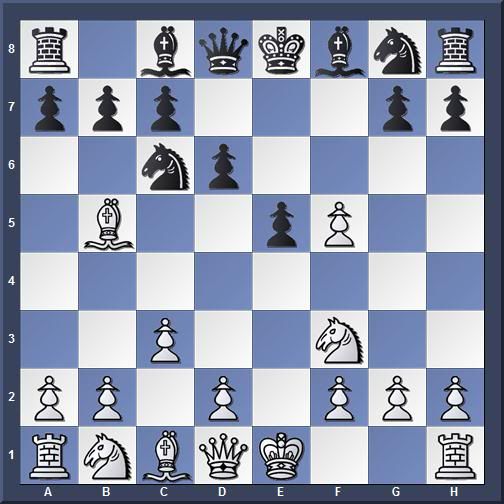[W]e have come to the conclusion, after careful analysis, that this form of opening is no exception to the general rule, inasmuch as the pinning of the Knight by the Bishop in the early part of the game cannot be of any advantage; and we find now that at the utmost the game can be made even by White against the best defence, which we think is 3...P-Q3.Steinitz reasons that deploying the knight to f6 deprives Black of an important resource, which he suggests in his "main variation":
Steinitz, The Modern Chess Instructor, 1
1.e4 e5 2.Nf3 Nc6 3.Bb5 d6 4.c3 f5.
White to move

4.d4 has become the main variation today.
This position from Steinitz's "main variation" appears nine times in ChessBase's Online Database. Moreover, Steinitz did not play 4...f5 when he had the opportunity. Instead, he prepared the f-pawn advance and played it in the early middle game.
Gunsberg,Isidor - Steinitz,William
World Championship, New York 1890
1.e4 e5 2.Nf3 Nc6 3.Bb5 d6 4.c3 Bd7 5.0–0 Nge7 6.d4 Ng6 7.d5 Nb8 8.Bxd7+ Nxd7 9.Na3 Be7 10.Nc2 Nc5 11.Qe2 Qd7 12.b4 Na4 13.Bd2 0–0 14.c4 f5

15.exf5 Qxf5 16.Rac1 Rae8 17.Nfe1 Bg5 18.g3 Nc3 19.Bxc3 Bxc1 20.Ng2 Qf3 21.Qxf3 Rxf3 22.Nge3 Bxe3 23.Nxe3 Ref8 24.Kg2 c6 25.Bb2 cxd5 26.Nxd5 Rd3 27.Bc1 b5 28.Ne3 bxc4 29.Nxc4 Rd4 30.Ne3 Rxb4 31.Rd1 Rb1 32.Ba3 Rxd1 33.Nxd1 Rd8 34.f3 d5 35.Nc3 d4 36.Ne4 Rb8 37.h4 h5 38.Kf2 Rb1 39.Bd6 Rb2+ 0–1
The oldest game that I could find with Steinitz's 4...f5 was played via correspondence the year following his World Championship match with Gunsberg. There, as in several other games, White met this idea with 5.exf5, rather than 5.d4 as given in Steinitz's book.
Pilkington,R - Brunton,William
GBR Fraser corr 1891–96, England 1891
1.e4 e5 2.Nf3 Nc6 3.Bb5 d6 4.c3 f5 5.exf5

5...Bxf5 6.d4 exd4 7.Nxd4 Bd7 8.0–0 Nxd4 9.Bxd7+ Qxd7 10.Qxd4 c5 11.Qe4+ Ne7 12.c4 0–0–0 13.Nc3 Re8 14.Re1 h6 15.a4 g5 16.Nd5 Bg7 17.Nxe7+ Kd8 18.Bd2 Be5 19.Ba5+ Kxe7 20.Qd5 Qc6 21.Rxe5+ dxe5 22.Qxe5+ Kd7 23.Qf5+ Re6 24.Rd1+ Kc8 25.Rd5 b6 26.Bc3 Rhe8 27.b3 Kb7 28.Kf1 R8e7 29.Be5 Qe8 30.Qf3 Ka6 31.Qc3 Rxe5 32.Rd1 Qh5 0–1
Perhaps Steinitz discovered this simple capture between writing his book and facing Gunsberg over the board.
*Edition Olms makes this text readily available with their 1990 reprint.















Interesting stuff - I never knew about Steinitz and ...f5. There's a great book called Chess From Morphy to Botvinnik by Konig which includes coverage of Steinitz and his defence to the Spanish, but I can't remember if it talks of the ...f5 plan, will have to read again at some point!
ReplyDeleteThanks Harvey. I took a look a Steinitz's book because I was doing some work on the Berlin Wall, which will appear in a couple of posts in the near future, and was curious how he might treat it. There is nothing, probably as the system hadn't yet been developed. The later f5, as Steinitz played it here seems to have some merit, but the early Nf6 doesn't really get in the way.
ReplyDeleteI had a quick look through 'Chess: From Morphy to Botvinnik', and Konig writes of 3...d6, "When the Berlin Defence was at the height of its popularity and seemed to solve the problem of a valid defence to the Ruy Lopez, Steinitz, instinctively distrusting the loose pawn formation, had gone his own way." And gives four illustrative games (Lasker-Steinitz 1894; Bernstein-Lasker 1914; Pillsbury-von Bardeleben 1900; Euwe-Capablanca 1922), unfortunately there's no mention of ...f7-f5 - so you've discovered something new! I guess Steinitz really didn't mind cramped positions, as long as he pawn structure was sound, as Fischer had said of him:
ReplyDeletehttp://patzerseescheck.blogspot.com/2011/04/fischers-top-ten.html